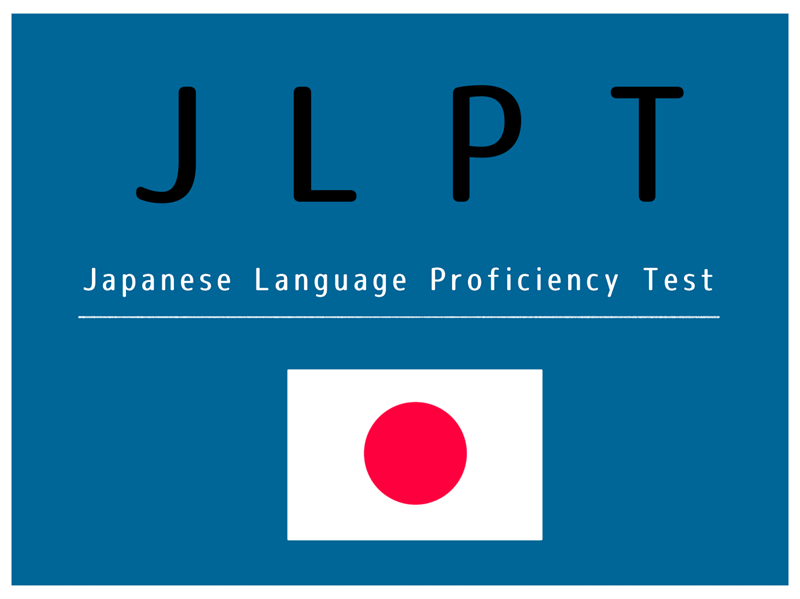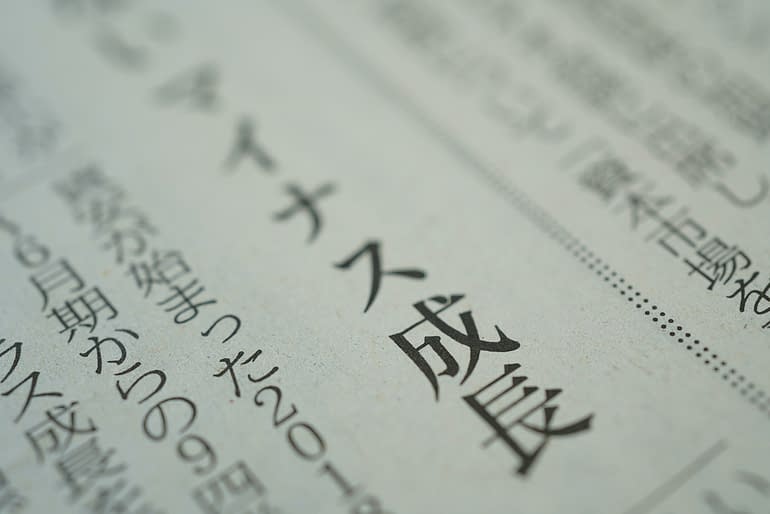JLPT – Japanese Language Proficiency Test
The Japanese Language Proficiency Test (or JLPT for short) is an international recognised qualification in the form of a standardised criterion-referenced test to evaluate the proficiency of the Japanese language for non-native speakers.
Sponsored by the Japan foundation, you can either take the test in Japan or overseas. The dates and implementation varies across the globe for the countries that are eligible, but for the UK the JLPT is administered by the SOAS Language Centre in the University of London.
The test is there to score your proficiency in learning the Japanese language, which can help you secure higher paying jobs, join university and generally broaden your horizons.
While you can find out more information about the Japanese Language Proficiency Test from their official website, we encourage you to explore our ultimate guide detailing everything you need to know about the test.It doesn’t matter whether you are learning the Japanese Language for professional reasons or to pursue your interest of learning a new language, JLPT is the medium for testing your knowledge of the Japanese Language

Why take the JLPT N5 exam?
JLPT comprises of five levels: N5, N4, N3, N2 and N1. The JLPT N5 is considered the beginners level of the test. This article will help you with the important information and whereabouts which will help you prepare well for the upcoming JLPT N5 level.N5 is the most basic level of the Japanese Language Proficiency Test and just requires you to understand some basic Japanese.
Preparing for, and taking, the JLPT N5 exam is a great learning experience and motivator for beginner Japanese language students. It can be challenging getting your head around a new language, so having an exam to work towards can give you structure and learning goals that help take your language skills to the next level.
The N5 isn’t going to land you a job with a Japanese company, but it does demonstrate your ability to understand the building blocks of the language. This foundation is crucial to the success of your Japanese learning journey.
Let’s also not downplay the sense of achievement you will feel when you pass the exam. It might be a life-long dream of yours to learn Japanese, or you might have Japanese heritage and want to connect with your roots. Whatever your reason for learning Japanese, passing your first JLPT exam is a significant milestone that shouldn’t be overlooked.
The N5 level basically ensures you can understand basic sentences and typical expressions written in hiragana, katakana, and basic kanji as well as from spoken conversations.

How is the Japanese Proficiency Test Scored?
Unlike other qualifications which may require passing specific modules, the Japanese Language Proficiency Test is marked both overall and using individual sections.
So while the JLPT is split into three different sections being; language knowledge (vocabulary and grammar), reading and listening – you are required to pass each section individually and overall. N5 has a total duration of 90 minutes and is split into three sections. 20 minutes for language knowledge (vocabulary), 40 minutes for language knowledge (grammar) and reading, and 30 minutes for listening.
Time duration for JLPT N5 preparation:
There doesn’t exist any vivid and straightforward answer to this question. Every learner has a different pace of learning. So, the time duration required for each student may vary. Other factors include the time dedicated for studies, contact with natives or previous exposure to new language studies. According to a report published in the official JLPT website, a learner needs approximately 200 hours of class duration. The learner must attain a combined reading/vocabulary/grammar score of at least 120 out of 180 and a listening score at least 60 of 80.
The grading of the JLPT is based on a test theory called Item Response Theory (IRT).From this information provided, JLPT N5 may seem difficult for the students to pass, however it is not the case. It entirely depends upon the learner’s interest, preparation and dedication.

Things which you should be well-versed with for JLPT N5 exam:
The N5 tests you on your ability to understand some basic Japanese. What does this mean? You need to be able to:
- Read hiragana and katakana
- Know about 100 kanji – these will be the most fundamental and common kanji, which you will usually study as a beginner Japanese learner
- Know vocabulary of about 800 words
- Listening skills should also be up to the level
You should be able to read and understand typical expressions and sentences written in hiragana, katakana, and basic kanji. As well as, be able to listen and understand conversations about regular daily life and classroom situations, and be able to pick up necessary information from short conversations spoken slowly.
Structure of the exam
The exam has three sections and a time limit is allocated to each.
Vocabulary (20 minutes)
In the vocabulary section, you will be tested on:
- The reading of words in kanji
- Kanji and katakana of words written in hiragana
- The meaning of words defined by context
- Words and expressions with similar meanings
Grammar and reading (40 minutes)
In the grammar and reading section, you will be tested on:
- Grammar formats that best suit sentences
- Accurate sentence composition
- Suitability of sentences for text flow
- Comprehension of easy text of about 80 characters regarding topics and situations relating to study, everyday life, and work
- Comprehension of easy text of about 250 characters regarding topics about everyday life
- Ability to retrieve information from materials, such as notices, of around 250 words
Listening (30 minutes)
You will be tested on:
- Able to comprehend necessary information to resolve specific issues and understand the appropriate action to take
- Can narrow down points based on necessary information presented in advance
- Choosing appropriate verbal expressions by listening and looking at illustrations
- Ability to choose the right responses by listening to short phrases, such as questions
Scoring of the exam
To pass any JLPT exam, you need two things:
- Your total score needs to be at or above the overall points required to pass (the “overall pass mark”) AND
- Your score in each section must be at or above the points required to pass each section (the “sectional pass mark”)
If you fail to achieve the pass mark for any section, then you fail the entire exam even if you have reached the total overall points needed to pass.
For JLPT N5, the sectional pass marks are as follows:
- Vocabulary, grammar and reading: 38 points
- Listening: 19 points
The overall pass mark is 80 points. (max is 180 points)
Preparing for the JLPT N5
Whether you are learning Japanese at a language school, taking an online course, or self-learning, the best piece of advice we can give you to pass your JLPT N5 exam is to study, study, and study more.
How long it takes you to master the requirements of this exam is like asking how long a piece of string is: everyone is different and learns differently.
Benefits of Taking the Japanese Language Proficiency Test
There are numerous benefits to taking the Japanese Language Proficiency Test, most notably in looking great on your CV. With the majority of schools and companies in Japan requiring at least a certain level of proficiency in the Japanese language, the JLPT can be extremely helpful.As well as admission into certain schools and companies, the JLPT can help you make the move to Japan. One of the ways to immigrate to Japan is through what’s called a “Highly-Skilled Foreign Professional Visa”.
This visa uses a point-based system in which you need 70 points to be eligible. One of the ways to rack up points is through the JLPT certification, meaning you’re more likely to be accepted if you have an N1 or N2 level certification.The JLPT can also help you secure high-level jobs in Japan such as management positions. Please find the full list of JLPT benefits below.
- Necessary for admission into universities and graduate schools within Japan.
- Necessary for admission or proof of proficiency for educational institutions in Japan (or your own country).
- To measure your own level of proficiency in the Japanese language.
- To attain certain jobs in Japan (or your own country).
- To secure a pay rise or higher paying jobs in Japan (or your own country).

At What Stage are People Taking the Test?
Something to consider about the Japanese Language Proficiency Test is that you can take the test at any age. It doesn’t matter whether you’re in primary school or are working full-time in a multinational corporation, you are eligible to take the JLPT.
Below is a breakdown of the most common times to take the JLPT.
- Elementary school (primary school education).
- Middle school or high school student (secondary school education).
- University or graduate school student (higher education).
- Student of some other educational institution.
- Employed (company employee, public servant, self-employed etc.).

The Role of Cultural Understanding in Japanese Language Proficiency Test Preparation
Understanding Japanese culture is not just beneficial, but essential for doing well in the Japanese Language Proficiency Test.
While primarily focused on language proficiency, the test is deeply rooted in the cultural history of Japan. A grasp of Japanese customs, traditions, and societal norms can massively help when it comes to comprehension and contextual understanding, especially in the advanced levels of the test like N1 and N2.
For example, understanding the honorific language (keigo), which is an important part of Japanese culture, can be a game changer in both the listening and reading sections. Being, familiar with these can provide valuable context, making it easier to understand and interpret the material.
This is why integrating cultural studies into Japanese Language Proficiency Test preparation can lead to a more holistic understanding of the language and a better score in the test – if you are moving to Japan anyway then there’s a good chance you are either interested in Japanese culture or you will find something useful.
Using Technology to Enhance Japanese Language Proficiency Test Study
Technology can play a vital role in language learning, and Japanese Language Proficiency Test preparation is no exception. Various apps, websites, and digital tools have proved to be useful resources for students. Apps like Anki for flashcards or language learning platforms such as WaniKani for kanji learning specifically cater to the needs of Japanese Language Proficiency Test students.
These tools often incorporate spaced repetition systems, ensuring efficient memorisation of vocabulary and kanji. Furthermore, websites offering practice tests and forums for discussion allow learners to test their knowledge and gain insights from peers. The use of technology in study routines makes learning more interactive and engaging and allows for flexible, self-paced study. This is great for people who are balancing work or life commitments.
The Impact of Japanese Language Proficiency Test on Career Opportunities in Japan and Globally
Achieving Japanese Language Proficiency Test certification can open doors for career opportunities, both in Japan and globally. In Japan, where language proficiency is highly valued, a Japanese Language Proficiency Test certificate can significantly enhance a job applicant’s resume, especially for positions requiring interaction with native Japanese clients or colleagues. It is not a requirement for getting a job although it will put you in a much stronger position.
Internationally, Japanese Language Proficiency Test certification can be a testament to your character – learning a new language, shows dedication, particularly if your native tongue is latin based.
Speaking Japanese can be appealing to multinational companies with business ties to Japan. For certain professions, such as translation, interpretation, or education, a high Japanese Language Proficiency Test level (like N1 or N2) is often a prerequisite.
Japanese Language Proficiency Test certification not only boosts employability but also can be a stepping stone to more advanced roles and opportunities in various fields.

Comparing Japanese Language Proficiency Test with Other Language Proficiency Tests
The Japanese Language Proficiency Test is quite unique when compared to other language proficiency tests such as the TOEFL or IELTS. While TOEFL and IELTS focus on assessing the test-taker’s ability to use English in an academic or professional setting, the Japanese Language Proficiency Test is more centered on everyday Japanese language use.
A significant difference is that the Japanese Language Proficiency Test does not have a speaking or writing component, unlike TOEFL and IELTS, which test all four language skills – reading, writing, listening, and speaking.
The Japanese Language Proficiency Test’s structure, comprising vocabulary, grammar, reading, and listening sections, offers a different challenge, focusing more on comprehension and understanding of Japanese in various contexts. This structure underscores the importance of passive language skills and cultural understanding in Japanese, setting it apart from its English proficiency counterparts.

The worth of JLPT N5 certification:
The JLPT N5 certification won’t help you grab career opportunities which comes along with the knowledge of the Japanese Language. But it is the best way to test your knowledge and motivate yourself. You will able to track and test your knowledge of the Japanese language. As the saying goes, “Good things take time”, the learning of the Japanese Language too follows the same route. It may take time and a lot of perseverance and patience but at the end of the day, you will shine out with all the efforts. So take your time and get yourself tested through all the JLPT levels to keep a track of your progress.
Learn, Grow and Glow!!! Happy Learning!!!
Table of Contents
Follow us on:
YouTube https://youtube.com/@abkomrjapaneselanguageschool?si=MdM9sTED16WndXS0
LinkedIn https://in.linkedin.com/company/abk-aots-dosokai-omr-japanese-languageschool
Facebook https://www.facebook.com/ABKAots.Thiruvanmiyur
Instagram https://www.instagram.com/abkomrjapaneselanguageschool
check out the previous blogs in this series
https://abkaots-th.com/unique-importance-of-japanese-language-part-1

